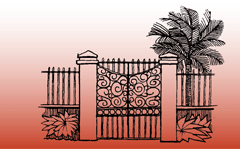Abstract
This article reviews the responses from the second ebrary informal survey of students concerning their experiences with information resources, which was conducted in September and early October of 2011. The first survey concluded in May of 2008. The surveys asked essentially the same questions about student use of electronic and print resources— perceived strengths and weaknesses as well as preferences and attitudes about them. This analysis compares the student responses separated by the three and a half years. Tables 11, 12, 15, and 16 use data constructed from the 2008 survey that were not initially reported so that they could be compared to the 2011 report. Percentages of responses for the line items were calculated from the total number of respondents to the questions.
Cover Page Note
ebrary, a ProQuest business, sponsored the 2011 and 2008 Global Student E-book Surveys along with many other industry surveys in a continual effort to understand the progressive e-book usage, trends, and needs of students, faculty, and librarians. To learn more about ebrary's surveys, please visit site.ebrary.com/lib/surveys or www.ebrary.com.
2011 Global Student E‐book Survey
This article reviews the responses from the second ebrary informal survey of students concerning their experiences with information resources, which was conducted in September and early October of 2011. The first survey concluded in May of 2008. The surveys asked essentially the same questions about student use of electronic and print resources— perceived strengths and weaknesses as well as preferences and attitudes about them. This analysis compares the student responses separated by the three and a half years. Tables 11, 12, 15, and 16 use data constructed from the 2008 survey that were not initially reported so that they could be compared to the 2011 report. Percentages of responses for the line items were calculated from the total number of respondents to the questions.
